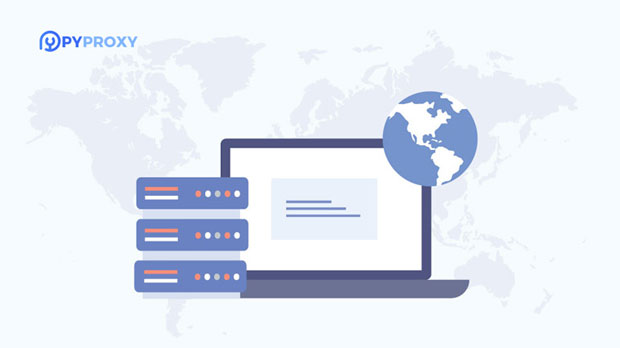In today's digital age, internet censorship and online restrictions are widespread, often limiting access to important information, social media platforms, and even crucial services. Many individuals seek ways to protect their online privacy, evade geographic blocks, or bypass governmental restrictions. One effective solution is using a socks5 proxy. Unlike regular proxies or VPNs, socks5 proxies are highly versatile, providing a secure and anonymous internet experience. This article will explore how to use SOCKS5 proxies to bypass internet censorship and restrictions, focusing on their functionalities, benefits, and practical applications for both personal and professional use. Understanding SOCKS5 ProxiesBefore diving into how SOCKS5 proxies can help circumvent internet censorship and restrictions, it is essential to understand what SOCKS5 is and how it works. SOCKS5, which stands for "Socket Secure 5," is a protocol that routes internet traffic through a third-party server, enabling users to mask their real IP addresses and circumvent restrictions on the web. Unlike traditional HTTP or HTTPS proxies, which are limited to specific types of traffic, SOCKS5 proxies can handle all types of internet traffic, including HTTP, FTP, and P2P data.The main advantage of SOCKS5 over other types of proxies lies in its versatility. While HTTP and HTTPS proxies only handle web traffic, SOCKS5 can be used to route various forms of traffic, including email and file-sharing activities. Additionally, SOCKS5 supports various authentication methods, providing an extra layer of security and control over who can access the proxy server.Why Use SOCKS5 to Bypass Censorship and Restrictions?The internet has become a battleground for digital freedom. Many governments and institutions implement censorship to control the flow of information, block access to certain websites, or impose restrictions on certain types of content. In such environments, using a SOCKS5 proxy can be an invaluable tool for overcoming these barriers.1. Bypassing Geo-restrictions and Firewalls Geo-blocking is a common practice used by content providers to restrict access to specific content based on the user’s geographic location. For example, video streaming platforms may restrict access to certain shows or movies depending on the country you are in. With SOCKS5 proxies, users can route their internet traffic through servers in different regions, effectively masking their real location. This allows access to content that would otherwise be restricted.2. Anonymous Browsing SOCKS5 proxies allow users to browse the internet anonymously. By masking the real IP address, SOCKS5 makes it harder for websites, apps, and even governments to track online activity. This is particularly beneficial for individuals who prioritize online privacy and security, including journalists, activists, or individuals in oppressive regimes.How Does SOCKS5 Proxy Work?A socks5 proxy server acts as an intermediary between your device and the internet. When you use a SOCKS5 proxy, your internet traffic is first sent to the proxy server, which then forwards the traffic to the intended destination. This allows the proxy server to act as a middleman, masking your original IP address and routing the traffic from an entirely different location.The process works as follows:1. Connection Request You configure your browser or device to connect to the SOCKS5 proxy server by entering the proxy server’s IP address and port number. Your request to access a website is sent through the proxy server rather than directly to the site.2. Traffic Routing The proxy server receives your request and forwards it to the website or service you are trying to access. The server sends back the requested data, which then goes through the proxy server before being sent to your device. This routing ensures that the target website or service only sees the IP address of the proxy server, not your real IP address.3. Bypassing Restrictions By using a SOCKS5 proxy located in a different geographic region or country, you can effectively bypass any region-based restrictions or censorship on the target website. Since the website only sees the proxy server’s IP address, it cannot detect your real location or identity.Setting Up SOCKS5 Proxy for BrowsingUsing a SOCKS5 proxy is straightforward, and it can be done with most popular browsers and applications. Below is a basic guide to setting up SOCKS5 proxy on your browser or operating system:1. Choose a SOCKS5 Proxy Server The first step is to choose a reliable SOCKS5 proxy server. Many VPN providers and proxy services offer SOCKS5 as a protocol. You will need the IP address and port number of the server.2. Configure Your Browser or Device To use SOCKS5 on your browser, go to the network settings or proxy settings section. Enter the SOCKS5 proxy server’s IP address and port number in the appropriate fields. You may also need to provide authentication details, depending on the provider.3. Test the Connection Once configured, test the connection to ensure it is working. You can use websites like "WhatIsMyIP" to check if your IP address has been masked and whether the proxy is routing your traffic correctly.4. Using SOCKS5 with Applications SOCKS5 proxies can also be configured on various applications, such as torrent clients, gaming platforms, and email clients. Each application will have specific instructions for setting up a SOCKS5 proxy, typically found in the network settings.Benefits of SOCKS5 Proxy for Internet Freedom1. Enhanced Privacy and Security SOCKS5 proxies provide a higher level of security compared to traditional proxies because they do not modify or analyze your internet traffic. This means fewer opportunities for attackers or third parties to intercept or monitor your data.2. Faster Speeds Since SOCKS5 proxies do not alter your traffic as much as other proxies, they tend to offer faster speeds. This makes them ideal for activities like streaming, gaming, and downloading large files.3. Avoiding Bandwidth Throttling Some internet service providers (ISPs) may throttle your bandwidth if they detect certain activities, such as streaming or torrenting. By using a SOCKS5 proxy, you can hide your online activities from your ISP, helping you avoid bandwidth throttling.4. Flexibility in Use SOCKS5 proxies are compatible with a wide range of applications and devices. Whether you're browsing the internet, downloading torrents, or using specific software, SOCKS5 offers the flexibility to route your traffic securely and anonymously.Challenges and Limitations of SOCKS5 ProxiesWhile SOCKS5 proxies provide numerous benefits, they are not without their limitations:1. No Encryption Unlike VPNs, SOCKS5 proxies do not offer encryption for your internet traffic. While they can mask your IP address and bypass censorship, they do not encrypt the data transmitted between your device and the proxy server. This means that your traffic could still be intercepted by malicious actors if you are using an untrusted proxy server.2. Dependence on Proxy Servers The quality and reliability of a SOCKS5 proxy depend on the server you are using. Using a low-quality proxy server could expose your data to security risks, and slow server speeds could result in a poor browsing experience.3. Potential for Detection Some websites and services are aware of SOCKS5 proxies and may block or restrict access from proxy servers. This is particularly true for large platforms like Netflix, YouTube, or other media services.ConclusionSOCKS5 proxies are a powerful tool for bypassing internet censorship and restrictions, providing users with an anonymous and secure way to browse the web. By masking the user's IP address and allowing for flexible routing of internet traffic, SOCKS5 proxies enable individuals to access blocked content, evade government censorship, and maintain online privacy. However, users should be aware of the limitations of SOCKS5, such as the lack of encryption, and should take additional steps to ensure their security. When used properly, SOCKS5 proxies offer a valuable solution for those looking to preserve their online freedom.
Dec 25, 2024






















































